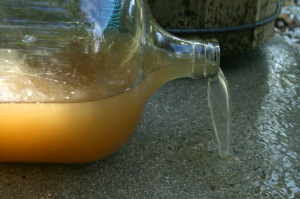Murky. Foamy. Toxic.
These are not the typical adjectives anyone should use to describe the water coming out of a kitchen faucet. But for the residents of Flint, Michigan, this has been the status quo for almost two years. In an attempt by the state to cut costs, the decision was made to temporarily switch Flint’s main water source from Lake Huron to the Flint River. The problem resulted after the state failed to properly treat the water and the contaminated water from the Flint River began corroding the existing pipes, leaching lead and metal into the residents’ drinking water.
According to the Lead and Copper Rule, if more than 10% of your tap water samples contain trace amounts of lead that exceed 15 parts per billion, the water is considered unsafe and additional actions must be taken immediately. Any level over 30 parts per billion is considered toxic waste. When the Michigan Department of Environmental Quality tested the homes in Flint in January of 2016, the results showed on average 600 parts per billion lead in 20% of the water supply. That means the men, women and children of Flint, Michigan had literally been drinking toxic waste.
Quality tested the homes in Flint in January of 2016, the results showed on average 600 parts per billion lead in 20% of the water supply. That means the men, women and children of Flint, Michigan had literally been drinking toxic waste.
Ideally, there is no such thing as a safe level of lead exposure, especially in children. Lead is known to cause multiple neurological effects, including behavioral and learning problems, slowed growth and hearing difficulties just to name a few. The Safe Drinking Water Act requires the US Environmental Protection Agency to determine the levels of contaminants in drinking water at which no adverse health effects can occur.
When the Safe Drinking Water Act defines the word “contaminant”, it refers to any physical, chemical, biological or radiological substance found in water. Three of the four categories of contaminants were present in the water in Flint.
Here is how the types are defined by the Safe Drinking Water Act:
Physical – Contaminant that impacts the physical appearance of water (Ex. The water from the Flint River was eroding the iron remains of the pipes, causing the drinking water to appear brown in color)
Chemical – Man made contaminants (Ex. High levels of chloride and disinfectants used by the water plant to fight e coli found in the Flint River and the leaching of lead into the water from the pipes)
Biological – Organisms in water (Ex. Bacteria and parasites in the Flint River)
Radiological – Chemical elements with an unbalanced number of protons and neurons
The local residents of Flint were kept in the dark (much like their water) about these contaminants up until the city failed its Safe Drinking Water annual inspection, which was a year after the switch. Residents were told by local officials on multiple occasions that the water was safe to drink, when in fact it was the exact opposite. Today, Flint is in a declared state of emergency and has to rely on federal aid to provide water bottles for drinking. The water supply has since been switched back to the Great Lakes, but the water is still unsafe to drink. The state of Michigan will have to replace the damaged pipes to prevent further disasters.
This crisis could have been avoided if a corrosion inhibitor had simply been added to the water. Let this be a hard lesson learned. Without proper water safety monitoring, this crisis could happen anywhere. The authorities that make these decisions should consult an expert – who would understand the potential for problems before making a final decision.






